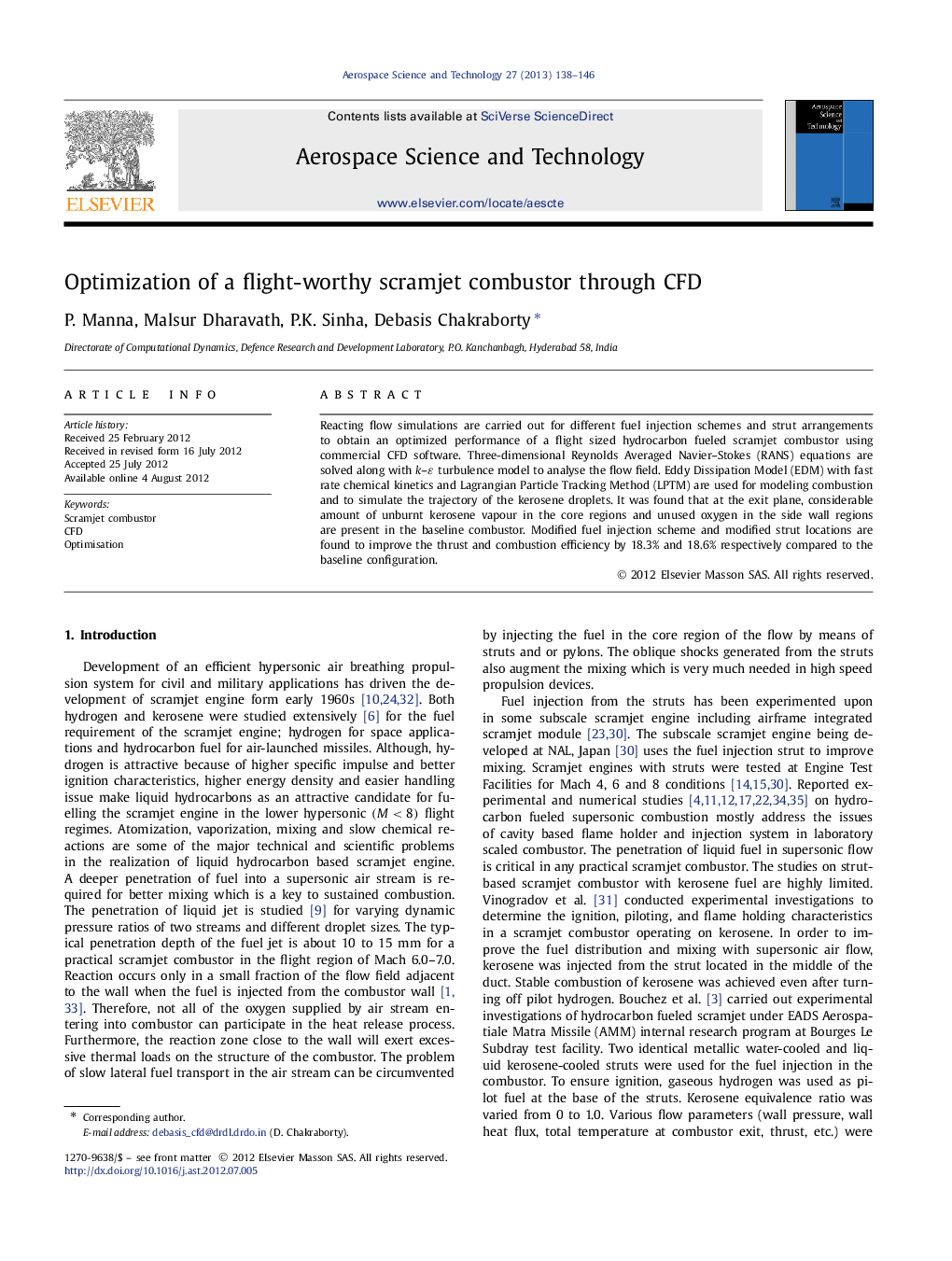| Article ID | Journal | Published Year | Pages | File Type |
|---|---|---|---|---|
| 1718210 | Aerospace Science and Technology | 2013 | 9 Pages |
Reacting flow simulations are carried out for different fuel injection schemes and strut arrangements to obtain an optimized performance of a flight sized hydrocarbon fueled scramjet combustor using commercial CFD software. Three-dimensional Reynolds Averaged Navier–Stokes (RANS) equations are solved along with k–ε turbulence model to analyse the flow field. Eddy Dissipation Model (EDM) with fast rate chemical kinetics and Lagrangian Particle Tracking Method (LPTM) are used for modeling combustion and to simulate the trajectory of the kerosene droplets. It was found that at the exit plane, considerable amount of unburnt kerosene vapour in the core regions and unused oxygen in the side wall regions are present in the baseline combustor. Modified fuel injection scheme and modified strut locations are found to improve the thrust and combustion efficiency by 18.3% and 18.6% respectively compared to the baseline configuration.
